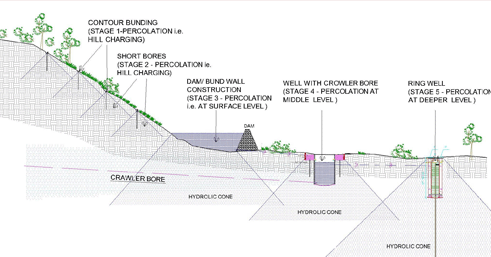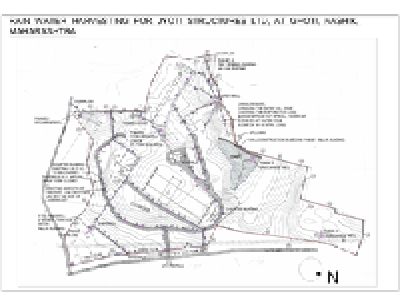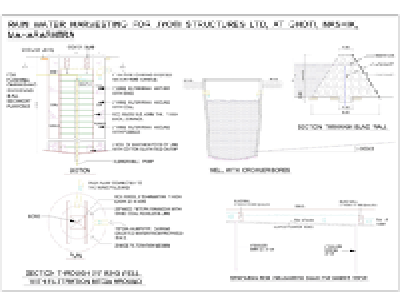Rain Water Harvesting Projects - Jyoti Structures
Area of Implication :
M/s Jyoti Structure is a world famous mechanical engineering, company. Specialized in manufacturing and testing M. S. Pilons/ Towers. Who owns a large piece of land, almost a entire hill from base to top for their company. Unfortunately the entire hill had very less water and hence they had to crop the plan of constructing factory but ended up constructing only R & D plant at Ghoti, Nasik, Maharashtra.
Pre Scenario:
The site is located at about 8 Km distance from Mumbai Nasik highway and entire hill of basult stone. Though it rains more than 3,000 mm. Water rushes down the hill quickly and there is no penetration of water in the hill mass.
Post Scenario:
This entire hill got charged with the help of first phase development only. Water retained into the bore wells as well as open well all through out the year till next monsoon, which gave confident to the owner to develope the balance vacant land too. However the second phase development is postpond due to this success
Outputs & Outcomes :
The additional water means, additional people, means additional work and additional productivity and additional national wealth. With this the outcome, is huge greenery, soothing temperature, beautiful landscape and attract the clouds and more rainfall and decreasing of green house effect / Reversing th bad elements.
Sustainability :
It is observed that, the ground water increased thus productivity and green cover which attracted more monsoon. Hence nature cycle was helped for its better and their by improving biodiversity and ecosystem.Minimum expenses maximum profit Minimum expenses maximum greenery Minimum expenses maximum water Minimum expenses maximum biodiversity
Scope of Replication :
In hill region away from urban areas where there can not be large dams or it is the only answer if one does not want to construct the dam and its related problems.
AWARENESS GENERATED
![]()
This awareness was explained thousands of years ago. This system perfectly replicated that.

Work Implementation :
Contour bunding i.e. at intervals of approx. 5 m. contour horizontal tranches were excavated parallel to contour. Stopping the rain water gushing at the base. Short bores were beared at intervals taking the water into the hill mass also stopping soil erosion.
After contour were charged, nallha formation were also constructed, bund walls were constructed to stop the nallha water and short bores were drilled to take this water into the hill mass again. The overflow was taken in ringwells at the bottom of the hill to charge the dipper caverns.
| In short |
First stage - Water percolation by contour Bunding - hill charging
Second stage - Nallha bunding - hill charging
Third Stage - Dam - bundwall (yet to be constructed) - surface charging
Fourth Stage - open well with crawler bores - middle level charging
Fifth Stage - Ring well with deep bore well - deeper charging
In the 2nd phase, A large nallha passing through the property is designed to be stopped by construction of Bund Wall/Vasant Bandhara which will form a lake and which would change the entire micro climate of hill and would facilitate water sports, recreation, and fish farming too.
At the base of the hill a open well is excavated and croller bores of about 100 mtr. deep were drilled horizontally below the hill. The charged water level of hills percolated its water into the open well through the horizontal bores like a water tank, which takes care of eveporation losses and levels the water till next monsoon.

